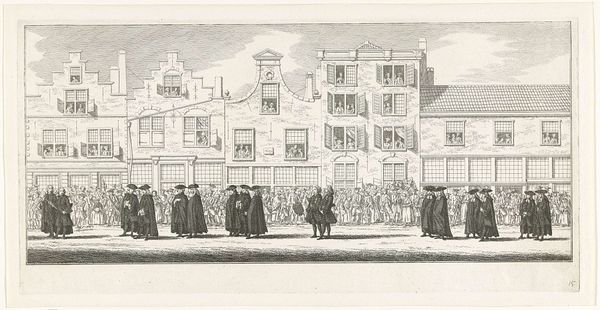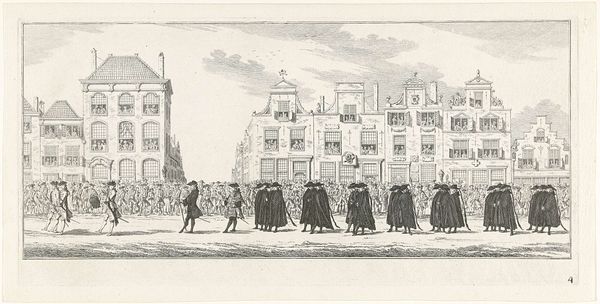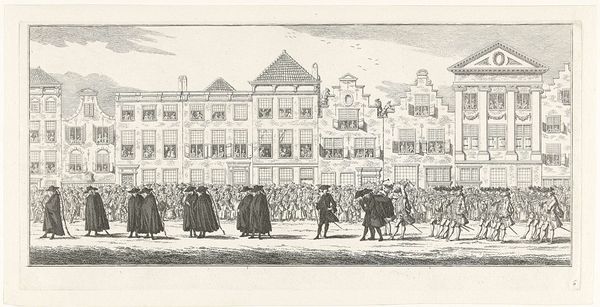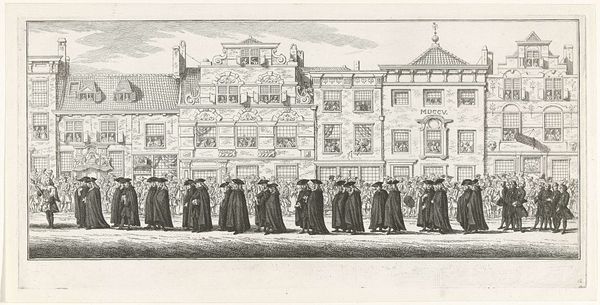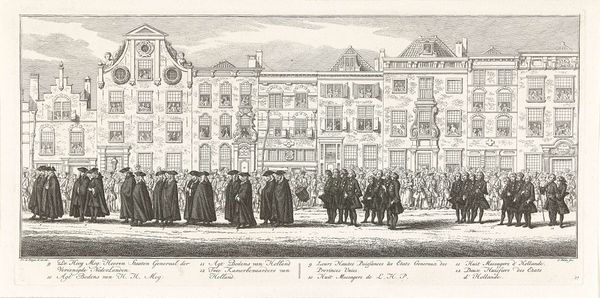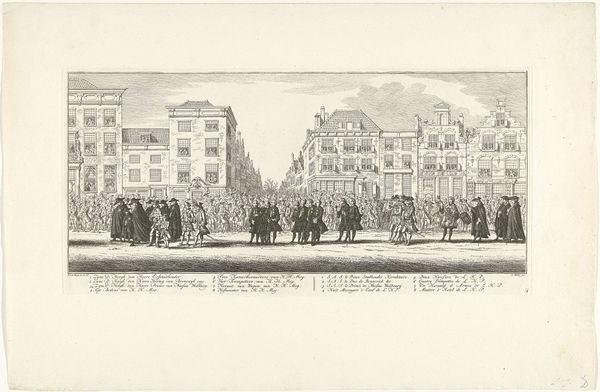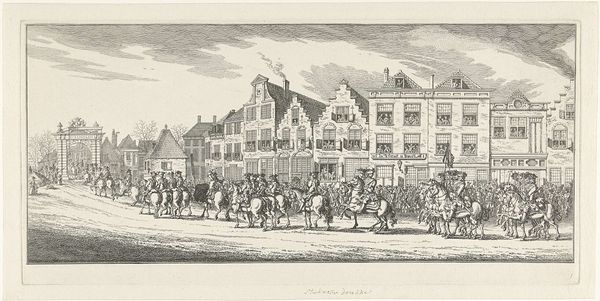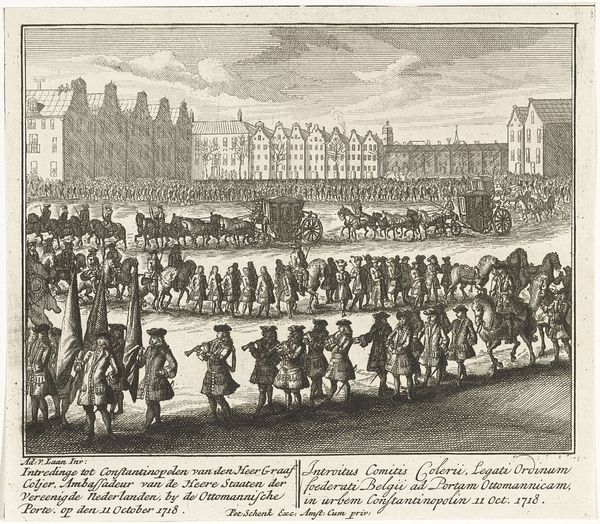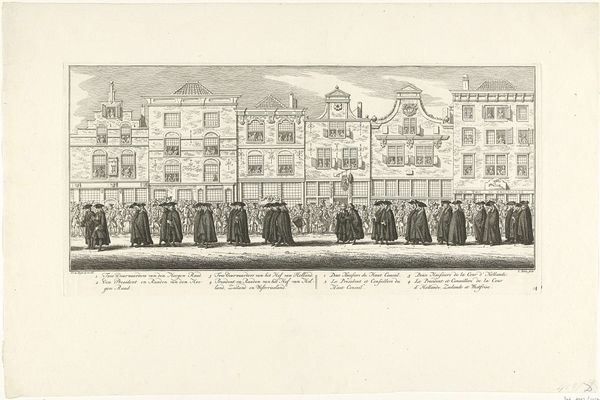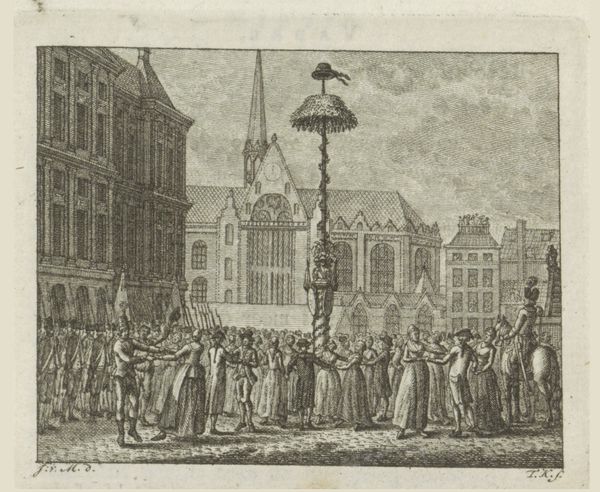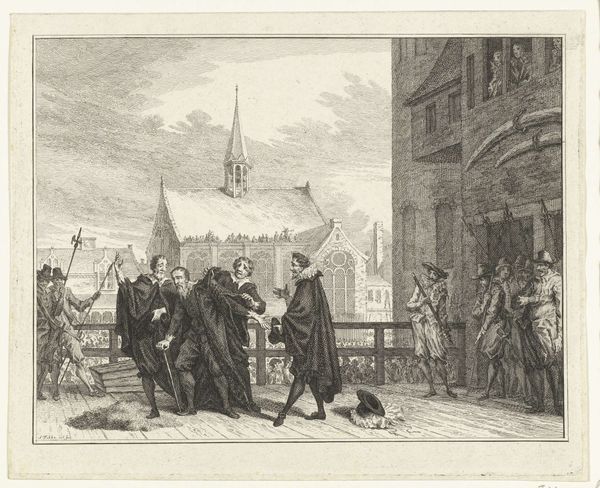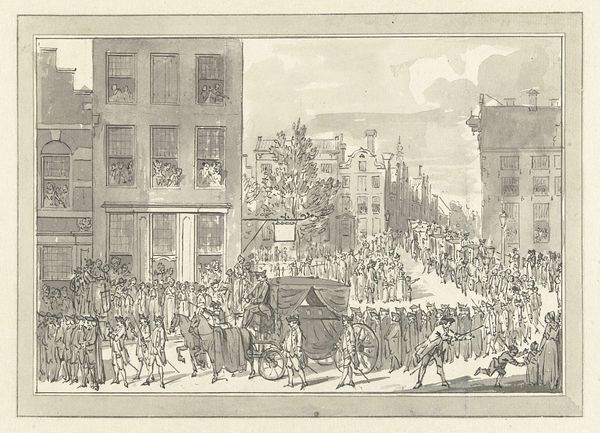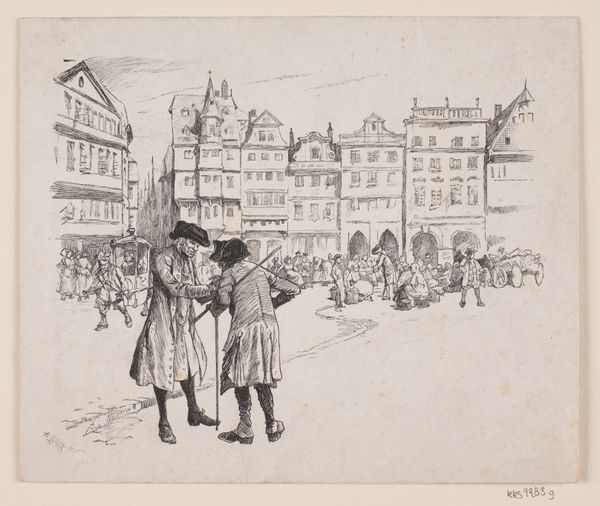
Vertegenwoordigers van de land- en zeemacht en verschillende landstreken in de lijkstoet van Anna van Hannover te Delft, 1759 1759 - 1761
0:00
0:00
print, engraving
#
baroque
# print
#
cityscape
#
history-painting
#
engraving
Dimensions: height 190 mm, width 395 mm
Copyright: Rijks Museum: Open Domain
Editor: So, here we have Simon Fokke's engraving, "Vertegenwoordigers van de land- en zeemacht en verschillende landstreken in de lijkstoet van Anna van Hannover te Delft, 1759," dating from around 1759 to 1761. It depicts a somber procession winding through a city. I'm struck by how many figures Fokke managed to fit into this image, and all those little faces peering from the windows. What stands out to you about this print? Curator: Ah, yes, a street crammed full, and rendered with such precision! For me, it’s all about the performance of grief, the social choreography. Look how Fokke captures not just the pomp and circumstance, but also those private moments of observation, of citizenry. You know, Delft becomes a stage here, a theatre for civic mourning. There’s a formal arrangement of power walking, and then the less controlled, shall we say 'human' reaction of those peering down from windows... What does that contrast suggest to you? Editor: It feels almost… voyeuristic, that glimpse into the windows, like we're intruding on something deeply personal even amidst all this official ceremony. Curator: Precisely! That tension between the official and the intimate is delicious. Think about the Baroque era this print springs from, a time of grandeur but also intense emotional display. I wonder, do you see elements of that drama at play here, beyond the obvious somber occasion? Perhaps a sense of calculated theatricality? Editor: Definitely, it feels constructed, almost like a stage set. All the people, the buildings, carefully arranged... Curator: Fokke uses line, light, and shadow, not just to document, but to evoke. Imagine the sounds of Delft that day - muted drums, hushed voices... all channeled into these very fine lines. This print isn't just *of* history; it’s actively shaping how we *feel* history. Food for thought, eh? Editor: It is. It makes me appreciate how much emotion can be conveyed even in something seemingly so straightforward as a historical record. Curator: Exactly, and maybe now we look at our contemporary records with a more critical, and sensitive, eye. That's the power of old art speaking to us now, centuries later.
Comments
No comments
Be the first to comment and join the conversation on the ultimate creative platform.
